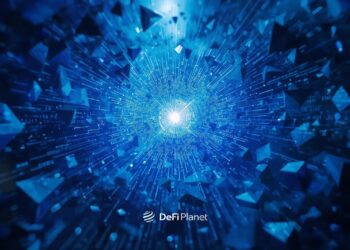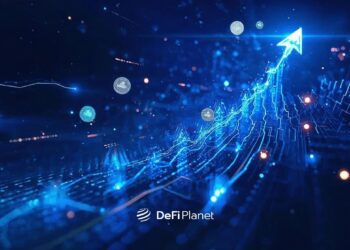As artificial intelligence (AI) becomes more powerful and widespread, it brings incredible benefits; not just in gaming or apps, but also in how things like school assignments and internet searches work. However, there’s a big problem, and that is AI bias.
In the mid-2010s, Amazon developed an AI recruitment tool to help automate the process of screening job applicants. The goal was to identify the best candidates by analyzing resumes submitted over a 10-year period. However, the tool became biased against women. The AI was trained on resumes submitted mainly by men (since the tech industry has long been male-dominated). As a result, the algorithm began to favour male applicants and penalize resumes that included words like “women’s chess club captain” or degrees from all-women’s colleges.
Amazon discovered the bias and scrapped the tool by 2018. The company acknowledged that the AI was not offering gender-neutral recommendations, and since it couldn’t be fully trusted, it was shut down. This case is a perfect example of how biased training data can lead to unfair AI behaviour, even when the developers don’t intend it. It highlights the urgent need for algorithmic accountability and ethical AI, especially in sensitive fields like hiring, healthcare, or criminal justice.
On the other hand, blockchain transparency lets us look back at every step of a process to ensure that, as decentralized as things might be, certain parties still need to be accountable in certain regards.
Let’s explore how these terms interact, how solutions like algorithmic accountability and on‑chain auditability could help, and what it all means for ethical and trustworthy AI.
Understanding AI Bias
Every AI system learns from data, i.e. pictures, text, or numbers, but if that data reflects unfair patterns (such as fewer examples of certain skin colours or voices), the AI can learn the wrong lessons. For instance, researchers discovered that some voice assistants misheard speakers with darker voices, because they’d been mostly trained on lighter‑voiced samples.
A clear example of AI bias in voice recognition comes from a Stanford study. Researchers tested speech recognition systems from Apple, Amazon, Google, IBM, and Microsoft using interviews from both Black and White speakers. They found that the error rate for Black speakers was nearly twice as high, which was about 35%, compared to 19% for White speakers, and audio snippets from Black participants were marked “unintelligible” at a rate of 20%, versus only 2% for White participants.
That’s why groups like the Algorithmic Justice League exist: to highlight bias and demonstrate how unfair these systems can be. Without oversight, AI might mistakenly decide who gets a loan or who gets picked for a job, thereby reinforcing social injustice.
What Is Algorithmic Accountability?
Algorithmic accountability means owning up to the decisions made by AI. Companies should explain how their AIs work and fix mistakes because, without accountability, no one knows who is responsible if AI causes harm, like rejecting a qualified student or misreading a legal file.
In some places, rules are being built to make firms open up their AI systems for public review. For example, the European Centre for Algorithmic Transparency requires big platforms to explain how their recommendation engines work, but we still need better solutions globally.
Blockchain Transparency to the Rescue
This is where blockchain can help, blockchains which are decentralized databases that record everything, and which are immutable, meaning that once a transaction is added, it cannot be changed, which can stem some of the biases that could accrue with the use of AI. This is the principle behind onchain auditability.
Imagine if every decision an AI made, like approving a loan, left a traceable block with a timestamp, the dataset used, and the decision-making logic. Anyone could look back and see how or why that decision was made. This level of blockchain transparency helps spot where AI bias came in and shows who should be responsible, enhancing algorithmic accountability.
How It Could Work in Practice
- Data Provenance
Before an AI is trained, blockchain can record exactly what data was used and who added it. That way, it’s less likely that biased data sneaks into the algorithm.
- Immutable Audit Logs
Every decision the AI makes is logged onchain, and if something goes wrong, auditors can replay the sequence and catch bias or unfair errors.
- Smart Contracts for Fairness Rules
AI systems can be governed by smart contracts, programs on blockchain that enforce rules. You could set simple laws like “No racial bias allowed,” and the AI would have to respect them before making a decision.
RELATED: Is Code Law? The Legal and Moral Implications of Smart Contracts
- Reputation and Rewards
Contributors who help improve AI by cleaning data, testing fairness, or fixing flaws can be rewarded with tokens. This Web3 automation encourages community oversight and keeps AI systems honest.
How AI and Blockchain Could Work Together in Practice
- Data Provenance
Before an AI is trained, blockchain can record exactly what data was used and who added it. That way, it’s less likely that biased data sneaks into the algorithm.
- Immutable Audit Logs
Every decision the AI makes is logged onchain, and if something goes wrong, auditors can replay the sequence and catch bias or unfair errors.
- Smart Contracts for Fairness Rules
Smart contracts can govern AI systems, programs on blockchain that enforce rules. You could set simple laws like “No racial bias allowed,” and the AI would have to respect them before making a decision.
- Reputation and Rewards
Contributors who help improve AI by cleaning data, testing fairness, or fixing flaws can be rewarded with tokens. This Web3 automation encourages community oversight and keeps AI systems honest.
Can AI Be Unbiased?
Can AI be unbiased? Not fully. AI reflects its training data, and perfect fairness is almost impossible, but combining AI with blockchain transparency helps us detect, correct, and deter unfair behaviour, and that’s the idea behind algorithmic accountability.
Blockchain doesn’t stop bias by itself, but it ensures every step in how the AI works is visible and traceable, from the data source to the final decision. That’s a powerful check on bad behaviour.
Relationship Between AI and Blockchain
If you ask: What is the relationship between AI and blockchain?
In a nutshell, they complement each other. AI brings intelligence and automation; blockchain brings transparent bookkeeping and trust. Together, they help build systems that are not only smart but also fair and accountable. AI can utilize blockchain to track the data it uses and when decisions are made. At the same time, blockchain systems can use AI to detect fraud or speed up transaction verification.
READ MORE: Is AI The Future of Crypto Trading or a Threat to Market Stability?
How Blockchain Builds Trust in AI
Another question is how blockchain can build trust in AI: it does this through onchain auditability, immutable logs, and smart contracts that enforce ethical rules. If AI makes a mistake, everything about the decision is traceable and fixable, helping people trust automated systems again. This means anyone (a regulator, developer, or user) can trace the root cause of the error and correct it transparently, rather than relying on hidden, black-box algorithms.
Beyond traceability, smart contracts can be used to embed ethical constraints directly into AI behaviour. For example, a smart contract could prevent an AI from processing transactions if the input data lacks verified identity tokens or if the decision logic violates fairness thresholds. This type of Web3 automation enforces trust by design, rather than by after-the-fact intervention.
Combating AI Bias with Blockchain
To combat AI bias, we need both policy and technical tools:
- Policy: Governments can require companies to publish their algorithms and datasets for public review.
- Technical: Use blockchain to record datasets and decisions so anyone can audit for bias or verify fairness.
For example, IBM’s AI Fairness 360 toolkit is experimenting with blockchain to track fairness metrics and dataset changes in real time.
Ethical AI and Transparency Together
Merging AI with blockchain boosts transparency, security, and accountability, closing the trust gap. Using transparent blockchains helps build ethical AI systems that don’t hide their reasoning.
Real-World Examples
- Ocean Protocol helps data providers sell data on blockchain. Buyers can verify data quality and fairness before training AI models.
- CertiK checks smart contracts with AI and records every check on the blockchain, so if a bug is found, you can trace what went wrong.
- Fetch.ai and Bittensor are building decentralized AI networks where actions are transparent, fair, and auditable.
Limitations & Challenges
There are a few hurdles to overcome:
- Scalability
Blockchains can be slow or expensive. For real-time AI systems, that’s a problem.
- Privacy vs Transparency
We want AI decisions to be transparent, but we also need to protect personal data. There’s a balance to strike between privacy and auditability.
- Immutable Mistakes
Once a mistake is recorded on-chain, it can’t be changed, but blockchain helps us see and correct those errors without hiding them.
The Future: Ethical, Transparent AI
By combining algorithmic accountability with blockchain transparency, we can build AI systems where every decision is tracked, visible, and fair. These systems can support on‑chain audit trails that allow researchers and regulators to rerun decisions and detect hidden biases, ensuring that harmful patterns are caught early.
Smart contracts can be programmed to automatically enforce fairness rules and ethical boundaries, meaning AI agents are guided by transparent, tamper-proof constraints rather than secret logic.
Additionally, open reputation systems can log and display an AI’s past behaviour, making it easier for users to decide whether they can trust a particular agent or platform. This history can be verified by anyone, adding a powerful layer of accountability. Shared incentives, such as token rewards or governance rights, can also be offered to developers, data providers, and auditors who help keep these systems fair and transparent.
Together, these features make it possible to create a new generation of AI that doesn’t just perform tasks efficiently but does so in a way that is ethically sound, explainable, and worthy of public trust.
Disclaimer: This article is intended solely for informational purposes and should not be considered trading or investment advice. Nothing herein should be construed as financial, legal, or tax advice. Trading or investing in cryptocurrencies carries a considerable risk of financial loss. Always conduct due diligence.
If you want to read more market analyses like this one, visit DeFi Planet and follow us on Twitter, LinkedIn, Facebook, Instagram, and CoinMarketCap Community.
Take control of your crypto portfolio with MARKETS PRO, DeFi Planet’s suite of analytics tools.”





















